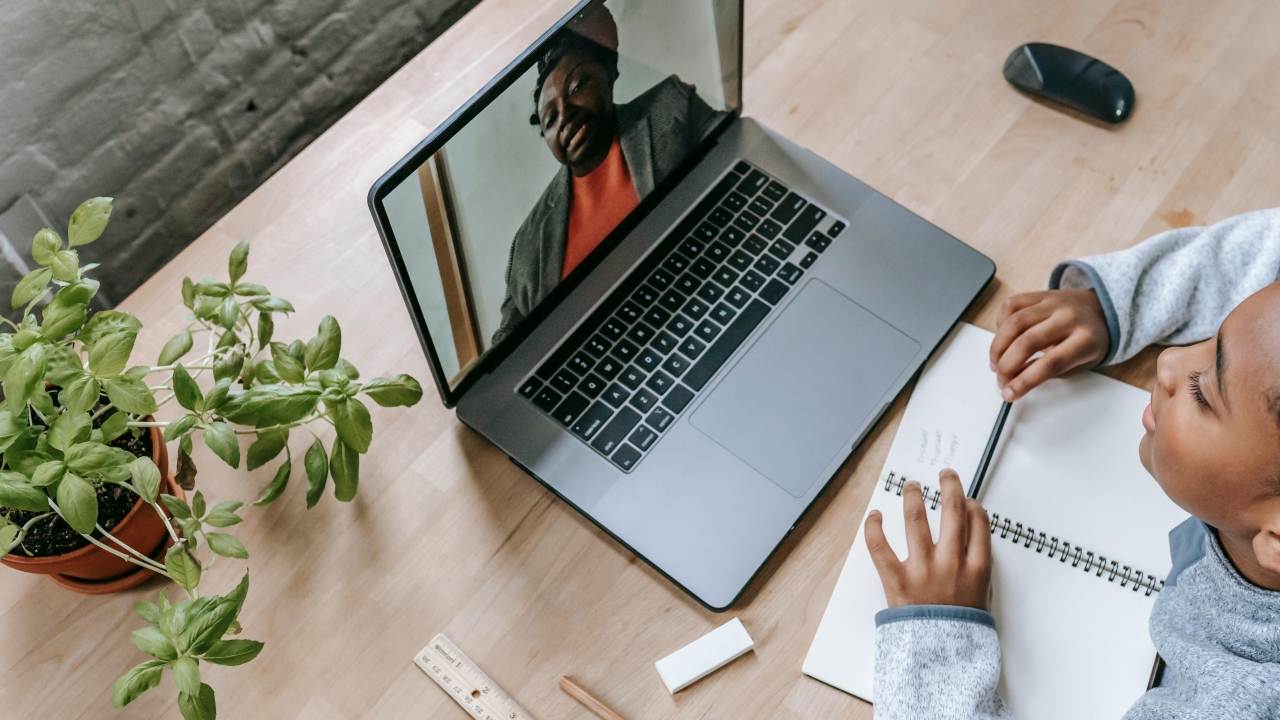Making Hybrid Learning Work

For some schools that are big enough, this means that they are able to welcome their entire student body back at the same time but for many this is simply not feasible if social distancing and other protocols are to be adhered to. These schools will have to choose between instituting a blended learning model or a hybrid learning model.
The terms blended learning and hybrid learning are often used interchangeably which is a mistake since although they share some common features, they are two distinct learning models:
Blended Learning combines in-person teaching with asynchronous learning methods, where students work on online exercises and watch instructional videos during their own time.
Hybrid Learning is a teaching method where teachers instruct in-person and remote students at the same time. In hybrid learning models, asynchronous teaching methods can be used to supplement synchronous, face-to-face instruction.
So for those adopting hybrid learning there really will be a distinct challenge as they adapt to delivering learning simultaneously to both in-person and remote learners. Technology will obviously play a crucial role, with some schools equipping classrooms with dedicated webcams and bolstering audio hardware to ensure that the learning being delivered remotely is clear and accessible. It will take educators using this system some time to adjust for sure and they will need to adjust their delivery to accommodate the split audience. Many will find that they need to be bigger and louder in their teaching than ever before in order to “come across” to the remote learners. They will also need to make sure that they have contingency plans and resources available since remote students will inevitably face issues with connectivity at times. This happened during the distance learning period too off course but now the teachers will have a group of students there in the room with them and this split in their attention could see the remote learners missing their learning.
There are some real benefit to choosing this system over the more well-known and established blended learning model though. The most obvious one is that it reduces the pressure on teachers to create multiple sets of learning resources to cater to both in-class and remote students. Using hybrid learning they will all access the same content simultaneously and therefore the teacher does not need to prepare multiple versions of the same content (e.g. recording a presentation in advance.) For students, hybrid learning offers more opportunities for real-time engagement between peers as well as more 1:1 interaction with their teachers both of which will help to foster engagement. For schools as a whole, the hybrid model obviously limits the volume of students that need to be on campus during these tumultuous times but it also reduces operational costs and provides logistical flexibility which will be beneficial if further changes are implemented.
So if you are a teacher who is about to return to school and adapt their pedagogy to fit the hybrid framework, I wanted to offer a few tips. Whilst there is no substitute for the experience itself and you will learn more from your mistakes than anything else, I hope that these five tips will provide a some initial guidance.
1. Set very clear expectations
It is crucial that you set very clear expectations with students (and parents) right away so that there is no chance for misunderstanding or misinterpretation. They need to know what is expected of them in terms of behaviour, attendance and attitude. Focus on delivering a message of consistency across the hybrid learning experience -with students striving to engage at the same level whether in-person or remote.
2. Don’t just use online activities
The temptation will be to deliver nothing but digital learning activities since half the students will not be physically present in the classroom. With some careful planning and consideration, there is no reason why analogue learning activities cannot be deployed to students working in both locations. This activity can still be captured and evidenced digitally but try to ensure that a broad range of learning opportunities are availed to students.
3. Use a single location to collate learning
This is something that may not seem important at first but from experience I can tell you that it is vital. If students are recording learning in multiple locations e.g. some is in exercise books in school, other content is recorded digitally in Teams or OneNote, what will happen is that students will find it difficult to return to this learning later (perhaps for revision) and access it effectively. Use your digital systems to provide one central hub for curating learning artefacts.
4. Reach out to your PLN for support and new ideas
You are new to hybrid learning – and guess what? You aren’t alone. Reach out to the global education community through social media for both support and inspiration. The whole world is dealing with the COVID pandemic and schools everywhere are breaking new ground. Sharing experiences will make it far easier for you to refine your practice.
5. Be open to feedback
All feedback is valid – be it from school leaders, parents or even the students themselves. Be open to it and make adjustments. The hybrid learning model is flexible and you should tweak and customise it to meet the needs of your own learners.
Stay up to date
Subscribe to the free GESS Education newsletter and stay updated with the latest insights, trends, and event news every week. Your email address will remain confidential


